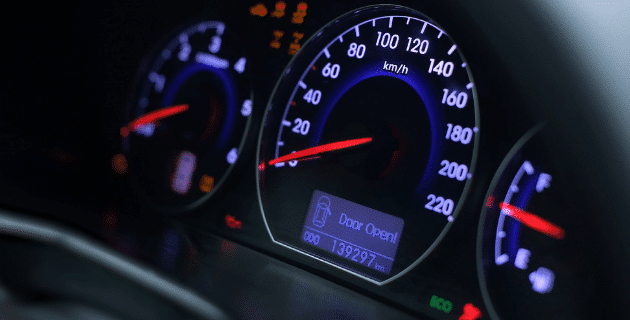
by California Casualty | Auto Insurance Info |
Whether it’s a minor problem or a major issue, you can count on that light on the dashboard illuminating. Our cars warn us when something isn’t right, and that’s good because there are some warning signs you shouldn’t ignore.
Knowing the meaning of your dashboard lights will help you know if it’s a situation that requires immediate attention—or if it can wait. Here are some important lights and what they mean.

Airbag Warning
The airbag warning light looks like a passenger with a large ball on his/her lap. It is normal for this light to turn on when you first start the engine. If it stays lit, however, there could be an issue. Your car is safe to drive, but you will want the airbag checked so that it will deploy during an accident.
Automatic Shift Lock or Engine Start Indicator
Today’s newer cars require that you step on the brake to start the engine. You also need to step on the brake to shift out of neutral into reverse or drive. This foot-shaped light is a reminder.
Check Engine
This light looks like a miniature engine. It comes on when there is anything amiss with your car’s motor and emissions system. Some cars have two stages of a check engine light: illuminated (less serious) and flashing (serious warning). It could mean:
-
- Loose gas cap
- Faulty oxygen sensor
- Catalytic converter issues
- Mass airflow sensor
- Worn-out spark plugs
- Loose wire
If you’re driving and everything seems fine, don’t panic. Pull the car over and check the gas cap. If that’s not the cause, then schedule an appointment as soon as possible. If the check engine light is on, and the car starts making strange noises or driving erratically, pull over and get it towed to your mechanic. That could indicate a more serious issue.
Battery
This light that resembles a battery is a warning that something could be wrong with your car’s electrical system. It doesn’t necessarily mean that there’s an issue with your battery. It could be:
-
- Corroded cable or wire
- Alternator
- Battery
- Electrical components
Get to a mechanic soon to resolve this issue. A battery light is a warning that your car could break down.
Brake System
This light is usually an exclamation point in a circle. It illuminates for several reasons.
-
- Failing to release the parking brake
- Low brake fluid
- Worn brake pads
- Trouble with anti-lock brakes
An illuminated ABS (anti-lock brake) light can indicate a problem with the wheel speed sensor or other connections or wiring. If your brake light is lit, and the parking brake is not the issue, bring your car in for a professional checkup as soon as possible.
Coolant Temperature
This light resembles a thermometer and if it comes on, it means the temperature of your coolant is too high. There are several possible causes.
-
- Broken water pump
- Low coolant levels in the radiator
- Leaking or burst coolant hose
- Damage to the radiator
A high coolant temperature can cause your car to overheat and break down. It also can permanently damage your engine. Pull over and let the car cool down. Adding coolant can temporarily fix the problem but get your vehicle checked by a mechanic before you drive it further.
Distance Warning
If you’re driving a newer vehicle, you may see this light when you’re coming too close to the car or something – or someone — in front of you. The light resembles two cars about to hit each other and is a warning to slow down.
Door Open
An image of a car with doors open indicates that one or more of your doors is not fully closed. This may include your trunk or rear hatch. Closing the door should make the light go out, and have you on your way.
Frost Warning
This light, which resembles a snowflake, comes on when temperatures outside are below freezing. It will stay on as long as it’s cold, to remind you that ice could form and you should use caution.
Lamp Out
Resembling a sun with an exclamation mark, this light comes on when a bulb in your headlights or tail lights burns out. Replace it as soon as possible so your car is visible to other drivers.
Low Fuel
A gas tank appears when your fuel level is low. Get to a gas station as soon as possible so that you don’t run out of gas.
Oil Pressure Warning
This light that resembles an oil can could simply be telling you that you need more oil. But it also could indicate something more serious:
-
- Leak in the engine
- Blown piston ring
- Broken oil pump
If the light doesn’t go off after you’ve added oil, then get your car checked out professionally. Do not ignore this light and drive for an extended period of time—or you could damage your engine.
Traction and Stability Control
When the roads are slippery, your car’s traction control light may blink. That simply means that it’s doing its job and there’s no cause for concern. This light, which looks like a car with skid marks, can stay on. If that happens, it means there’s a problem with your system and you should have it checked. Also, if this light turns on during dry, sunny conditions, there may be a repair or adjustment needed.
Transmission Temperature
This gear wheel image with a thermometer lights up when the temperature is too high inside your gearbox. Heavy towing can cause this issue. Otherwise, it’s likely that your transmission fluid level is low or your transmission has worn out. Get your car to a mechanic as soon as possible.
Tire Pressure Monitoring System
When any one of your tires is low, your TPMS system kicks in. The light looks like a tire that’s a bit deflated with an exclamation mark. Don’t drive on severely underinflated or overinflated tires; you won’t have enough traction and you can damage your tires. Adding air to deflated tires should get the light to go off, but if you have persistent problems, have your tires checked by a professional.
Washer Fluid
If your washer fluid is low, you’ll see this light, which resembles a windshield being squirted. While you don’t have to rush to get new fluid, it’s still a good idea to get some as soon as possible. Dirt, snow, and ice can quickly build up on your windshield, making it hard for you to see.
Car Diagnostic Tools
You can buy a tool that helps you diagnose the specific problem that’s causing your dashboard lights to illuminate. Auto Zone offers this Fix FinderSM Service for free. If you are doing it yourself, make sure that you know where to plug it in and how to read it. Some car diagnostic tools require you to enter your car’s make and model, VIN, and other information. You can then decide if it’s something you can fix or an issue that your mechanic needs to address.
Importantly, you will want to address any issues in a timely manner. Ignoring them can create more expensive repairs and dangerous conditions down the road.
Check our other blog for maintenance mistakes that can cost you. Your car is one of your greatest investments. Keep it well maintained and protect it with the right car insurance.
This article is furnished by California Casualty, providing auto and home insurance to educators, law enforcement officers, firefighters, and nurses. Get a quote at 1.866.704.8614 or www.calcas.com.
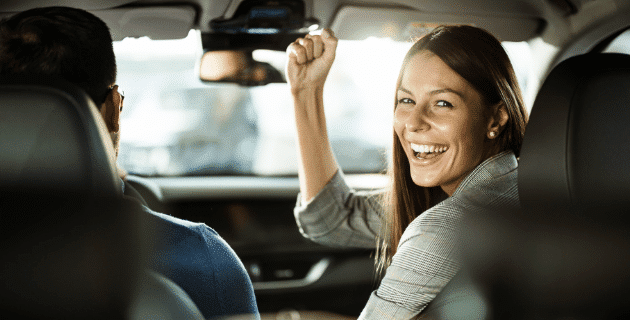
by California Casualty | Auto Insurance Info, Homeowners Insurance Info |
Nearly 60% of Americans are underinsured or don’t understand what is covered by their policies.
Make sure you are properly covered going into the new year with these 6 New Year’s insurance resolutions
1. Make sure you have the correct amount of auto coverage
Have your driving habits changed in the past year? Maybe you accepted a new job and your commute is longer or smaller, or you added a new driver to your policy. These life changes will all affect your insurance coverage and premium costs.
Making sure you have the right amount of auto coverage is crucial in case of an accident, so you don’t have to end up paying the majority of your costs out of pocket. For example, make sure you have enough liability coverage on your current policy. If you cause an accident, you are responsible for damages (and if it is a serious accident loss of wages of the victim/their family). Liability coverage is used to pay for those damages that you caused.
Your insurance will only pay for the amount that you’ve designated for liability. The rest comes from your pocket, so don’t skimp on this important coverage.
2. See if you qualify for any additional discounts
Did you know that if you have a teen driver they can take a driver’s safety or education course to qualify for discounts on your auto insurance? You can also turn in their report card for a ‘good student discount’.
You may qualify for insurance discounts for being part of a professional association, such as groups for teachers, nurses, or first responders. There are also discounts for being retired, for drivers turning 25, for paying via automatic bank payments, and for paying in full upfront. You may qualify for a new home discount, or a discount if you have updated your utilities (electrical, plumbing, heating, cooling) in an older home, or added a security system. There are also discounts for a new roof and an automatic sprinkler system. You can even be rewarded for being a loyal customer!
3. Create a home inventory checklist
A home inventory is a list of all of your possessions and their values. While creating one may sound like a waste of time, it’s important to have an updated list of all of your possessions so that you can get fully compensated if there was a disaster like a fire or a tornado, or a burglary. Without a home inventory, you may have difficulty pinpointing all of your belongings and lose out on their value and it can even delay the claims process. Start fresh with all of your new belongings after the holidays and put the checklist in a safe space, in the event of an unexpected loss, you’ll be glad you did.
4. Do you need additional coverage?
Did you know your home and/or renter’s insurance doesn’t include flood coverage? If you live in a flood-prone area you need to have Flood Insurance. The same goes for Earthquakes and Earthquake Insurance.
Do you have a pet that you love like a child of your own? While they will be covered if you are both in an accident in a covered vehicle thanks to Pet Injury Protection from California Casualty, make sure you will get reimbursed for any emergency surgeries, x-rays, labs, prescriptions, and more by adding Pet Insurance.
Need some extra coverage in case of an accident or disaster to ensure your family and belongings are safe? Ask your insurance agent if Umbrella Insurance or Scheduled Personal Property Coverage is right for you.
Umbrella Insurance is an extra layer of coverage that protects you and your family by covering additional damage costs that extend beyond the limits of your homeowner’s, auto, or watercraft policies. This additional coverage ensures your personal assets are safe. The primary purpose of this coverage is to protect you if you’re found liable for causing bodily injury to others or damage to their property. It also protects against incidents involving slander, libel, false arrest, and invasion of privacy, as well as any legal defense costs – even if you’re not found liable.
Personal Property Coverage, also referred to as “contents coverage,” is the term insurance companies use to collectively define the things you own inside your home. Scheduled Personal Property Coverage, or rider, is additional coverage for more special and/or expensive items such as jewelry, watches, heirlooms, furs, collectibles, etc. that have values above your personal property coverage limits. Both coverages are invaluable to make sure your personal belongings are covered in the event of a disaster or burglary.
5. Know what benefits are available to you
At California Casualty we offer our insured exclusive benefits like:
-
-
-
- Affiliate Group Rates & Generous Discounts
- FREE ID Defense Resolution
- Summer or Holiday Skip Payment Options
- Waived / Reduced Deductible for Collision or Vandalism While Parked on School Property – for Educators
- Personal Firearm Coverage & Fallen Hero Benefits – for First Responders
- No Charge Personal Property Coverage Up to $500
- 24 x 7 Towing & Roadside Assistance
- $1,000 Free Pet Injury Protection Coverage
And more! Speak to your insurance agent and ask which benefits are available immediately to you.
6. Schedule your annual free policy review
When’s the last time you took a look at your Insurance policy? Chances are if you haven’t had an accident or a loss, it’s probably been a while. And knowing more about your insurance could even save you money on your premiums. That’s why it is recommended to speak to your insurance agent at least once a year for your annual policy review. They will answer all of your questions and make sure you have the correct amount of coverage.
We know understanding your insurance coverage can be confusing, but we’ve got you covered! There is no better time to start getting the most out of your insurance protection than the new year. Call your California Casualty agent today to make sure you are taking advantage of your coverage and benefits all year long.
This article is furnished by California Casualty, providing auto and home insurance to educators, law enforcement officers, firefighters, and nurses. Get a quote at 1.866.704.8614 or www.calcas.com.
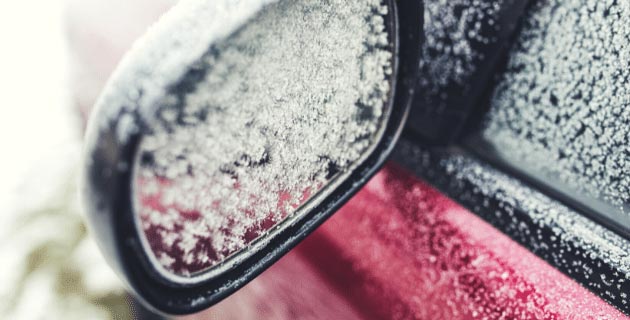
by California Casualty | Auto Insurance Info |
You’ve done it a hundred times – sitting in a cold car, watching your breath while you’re waiting for the engine to warm up. It’s a necessary part of winter driving, right? Experts would disagree.
It used to be that cars needed to be warmed up before you could drive them in cold temperatures. But that’s no longer the case with today’s vehicles. Whether you’re an experienced or a new driver, here’s what you need to know.
Why today’s cars don’t need a lot of warm-up time
A car’s engine works by igniting a mixture of gasoline and air. That used to be the job of the carburetor. But carburetors didn’t work well in cold temperatures because they couldn’t get the right mix with denser cold air. If you didn’t warm them up, you ran the risk of stalling your car. Starting in the 1980s, manufacturers stopped using carburetors in favor of new technology.
Today’s vehicles use electronic fuel injectors that can detect cold weather and release extra gasoline for the right fuel-air mix.
Warming up your car is a waste of time, gas, and money.
It’s a given that you could be using your time more productively than waiting for your car to warm up. As you idle, you’re burning gas, which is essentially wasting money, too. You’re also increasing wear and tear on your car’s engine. Plus, you’re adding pollution to the air. According to a 2009 study, idling your car contributes to 1.6% of all U.S. greenhouse gas emissions. That’s nearly double the entire iron and steel manufacturing industry. States have begun to take notice and issued anti-idling fines beyond 3 minutes.
A one-minute warm-up
With your car’s onboard computer and fuel injection system, it takes just about one minute for your car to warm up. That’s regardless of the outside temperature. That doesn’t mean that the inside of your car will be warm, or that the windows will be defrosted, but it does mean that the oil has traveled from the bottom of your engine to the top.
7 Steps to quickly heat up your car
Follow these steps to quickly heat up your car this winter.
1. Turn on your ignition without starting the engine. After about 5 seconds, you should hear the fuel pump priming the engine. Then start the car.
2. Don’t turn on the heat right away. The air being pumped out from the heater core will still be cold. That air will keep the engine from getting hot quickly.
3. Also make sure you are not running the radio, your seat warmers or defroster initially as these put a strain on the electric system.
4. Idle your vehicle for about 30 seconds (or a minute if your car is older). You can go a little longer if your car is covered in snow or ice. This will allow your vehicle to produce warm air.
5. You do want to give yourself time to warm up that has nothing to do with the engine. It’s all about your visibility and your comfort. You want to be able to see while you are driving and you want to be comfortable enough so you can concentrate on the road. Turn on the defroster to help clear the windows. Wait until you can drive safely; don’t try to drive with a small portion of cleared window.
6. Cars will warm up faster if you are driving than if you are idling. Normal driving for 5-10 minutes should do the trick.
7. Once you’re driving, point the warm air at your chest. That will warm you as quickly as possible. Then point the heat at your feet. As heat rises, the whole car will stay warm.
Tips for the extreme cold
In some places in the U.S., such as the upper Midwest, temperatures can dip well below zero and stay there. Consider these additional steps to help your car weather the cold.
-
- Once regular oil gets below 20 degrees Fahrenheit, it becomes thick. Use synthetic oil which holds its consistency.
- Battery heating pads and thermal wraps can keep your battery warm. A cold battery trying to hold a charge in frigid temperatures can harm your alternator.
- Oil heaters for the dipstick or magnetic heaters for the oil pan can help. There also are coolant heaters for antifreeze.
- Engine block heaters attach to your car and plug into an electric outlet. You can install a permanent heater, too.
Protect your car with auto insurance for peace of mind this winter and all year round.
This article is furnished by California Casualty, providing auto and home insurance to educators, law enforcement officers, firefighters, and nurses. Get a quote at 1.866.704.8614 or www.calcas.com.
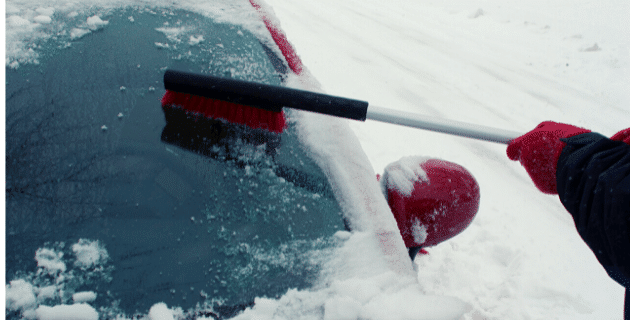
by California Casualty | Auto Insurance Info |
Winter driving presents its share of challenges, from icy road conditions to car batteries that strain due to the cold. If you live in a region where the temperatures dip down low, you could be sitting in a freezing car for hours if it breaks down.
Thankfully, some forethought and preparation can help. Make sure you’re fully prepared for whatever winter throws at you and stock up on these must-carry items for your emergency winter car kit this season.
#1: Ice scrapers, snow brushes, and a foldable shovel
It’s important to clear your whole car before you drive. Snow and ice can slide from your vehicle’s roof and obstruct your view while driving. It also could fly off and hit another car. Choose scrapers and brushes with long handles that allow you to reach the top of your vehicle. Stock several and the kids can help, too! Get a portable snow shovel too, one that folds so it takes up less space. Then use it to dig your car out as needed.
Tip: You can also use the shovel to add fresh snow or dirt around your tires to help them grip.
#2: A bag of sand or kitty litter
Your car may get stuck in the snow or be unable to move past an icy spot. Pour some sand or kitty litter over your tires and/or on the ground for extra grit to help with traction.
Tip: You can put your car’s floor mats down in front of your tires to get your car out of slippery situations. Watch the video from Firestone.
#3: Hazard triangles and LED flares
When you break down on the side of the road, you want to be seen—by other vehicles and by emergency personnel who can assist you. That’s the purpose of the hazard triangles and LED emergency flares. These are especially important when there is reduced visibility such as at night or during snowstorms.
Place the reflective hazard triangles behind your vehicle starting at 10 feet and going as far as 100 feet. Road flares have traditionally been used to mark sites for emergency responders. Rather than the traditional flares that light like a match and ignite, choose the modern version—a LED safety flare. They are designed to be waterproof, shatterproof, and crushproof and some are even magnetic and can stick right to your car.
Tip: To reduce the drain on your battery, use your car’s emergency flashers only if you hear vehicles approaching.
#4: A flashlight (and some extra batteries)
A flashlight can help you find things in the dark. It also can be used to signal passing cars. Choose an LED flashlight that offers plenty of light. If you can, pack several flashlights so that everyone in the family has one. Store batteries backward in the flashlight to prevent the light from accidentally switching on and burning out. Keep a spare set of batteries on hand just in case.
Tip: Pack some glow stick necklaces for the kids. They’re also great fun and an easy way to find everyone in the dark.
#5: Jumper cables and a battery charger
Low temperatures put an additional strain on your car’s battery. In fact, the freezing cold can turn a weak battery into a dead one overnight. If your car breaks down due to a dead battery, jumper cables can help. These cables allow you to charge your car’s battery from another car’s. You also may want to invest in a portable battery jump starter. These devices jump your battery without another car. They also can power your other devices such as cell phones or tablets.
Tip: Find out much battery life you have left with a free battery test at Firestone.
#6: A cell phone charger and portable power bank
Your cell phone is your connection to the world—and to help. Keep it as charged as possible by having a charger in your car. However, if your car doesn’t start, the car charger won’t do much good. Be sure to pack a portable battery or power bank.
Tip: If you’re stuck and your cell phone is losing power, change your outgoing message to your current location, time and date, and any other important details. That way, if your cell phone stops working, callers will get that message.
#7: Blankets and cold weather clothes
Keep a few blankets or sleeping bags in your trunk. If you want to save on room, choose pocket-size heat-reflective blankets. Then, stock some warm clothes for every member of the family: old sweatshirts, thick pants, warm socks, boots, mittens, and warm hats. Add some hand or feet warmers, which could provide much-needed warmth in an emergency.
Tip: Don’t run your car’s engine unless you are sure the exhaust pipe is free of snow. Snow can plug your vehicle’s exhaust system and cause deadly carbon monoxide gas to enter your vehicle.
#8: Snacks and water
If you’re spending any significant time in your car, you’ll want food and water. Keep water bottles and non-perishable snacks in your car through the winter. Consider these ideas: prepackaged trail mix or nuts/seeds, dried fruit, granola bars, chocolate, dry cereal, crackers, cookies, peanut butter (or other nut butters), rice cakes, pretzels. Choose kid-friendly snacks in case the kids are with you; you’ll enjoy them even if they’re not there.
Tip: For a more substantial snack, pack canned food that can be eaten cold and a can opener. Don’t forget the plastic utensils.
#9: Entertainment
Keep the kids busy with some games and activities. This will help keep them from feeling stressed and it will help pass the time. Pack a travel game bag. Include decks of cards, puzzles, coloring books and crayons or paper for older kids, and travel games. Sing songs, tell jokes, and keep the time as light-hearted as possible.
Tip: Make it a game. Take a poll on how long it will take to get home or what the tow truck driver will look like.
#10: First Aid Kit
A first aid kit is especially needed in winter because emergency response times may be longer due to icy or snowy conditions. You can buy one or make your own. Include bandages, gauze, adhesive tape, antibiotic ointment, scissors, saline solution for eye washing or cleaning wounds, aloe vera to treat minor burns, an antihistamine for allergic reactions, and anything else your family may need.
Tip: Add baby wipes, which will help if you or the kids have to go to the bathroom outdoors in nature. A garbage bag can also be a makeshift toilet if need be.
You can save some steps and buy emergency roadside safety kits that combine many of the items on this list.
Finally, should you have a winter-related accident or incident, know that your collision and comprehensive insurance will help protect you.
Safe travels.
This article is furnished by California Casualty, providing auto and home insurance to educators, law enforcement officers, firefighters, and nurses. Get a quote at 1.866.704.8614 or www.calcas.com.
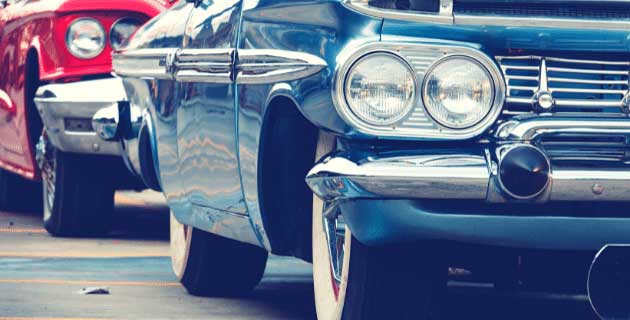
by California Casualty | Auto Insurance Info |
We’ve all got that one person in our lives who absolutely lives for cars. Their knowledge can rival any Google search. And don’t even get them started about a certain body style or engine, or they’ll never stop. To them their car isn’t just a car; it’s their baby.
If you’ve got one of these folks on your gift list, you’re in luck! Whether it’s the latest tech toy or the unusual find, we’ve got the best gifts for all car enthusiasts below.
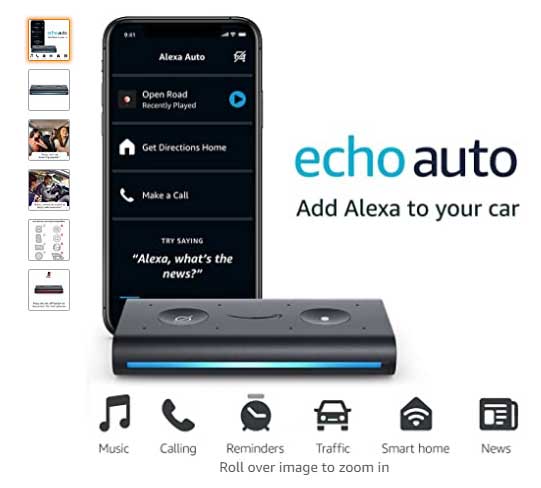
Hi-tech Gear
The car may be the centerpiece but these hi-tech additions can make a sweet ride even sweeter!
- Amazon Echo Auto puts Alexa right in your car. The device connects to the Alexa app on your phone and plays through your car’s speakers. Alexa can play music, make calls, find a nearby coffee shop, pay for gas, all at the command of your voice. It doesn’t work with all car models or smartphones, so check before you buy.
- NOCO’s Portable Battery Jump Starter Pack offers peace of mind if you ever need an extra charge. It’s also an LED flashlight and a portable power bank for USB devices. This booster is rated for gasoline engines up to 6 liters and diesel up to 3 liters.
- The Garmin Dash Cam Mini 2 alerts you if there’s an incident around your car and automatically records it. It provides video if you’re ever in an accident. This device is prohibited in some areas; make sure you’re aware of the local laws.
- The Car Cushion with Massage and Heat from Sharper Image offers comfort and warmth for those long, cold winter drives—and even the short ones!
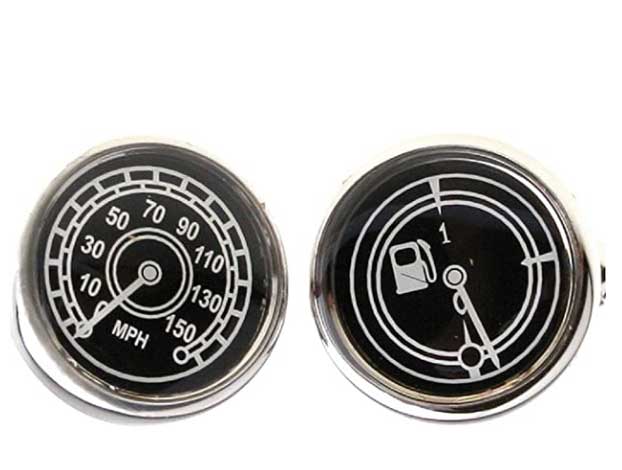
Car Inspired Fashion
These trendsetters are a must for car lovers when they aren’t behind the wheel.
- Puma has a line of motorsport sneakers that celebrate such carmakers as Porsche, BMW, and Ferrari. With logos and team colors, these kicks are perfect for life in the fast lane. Pair them with Heel Tread socks, inspired by classic car brands.
- Driving gloves are not only a stylish accessory. They give you a firmer grip on the wheel and they keep the wheel from getting dirty or sticky.
- From t-shirts with classic Corvettes to funny ones that proclaim “still plays with cars,” Zazzle has some great options.
- Speedometer and fuel gauge cufflinks are the perfect accessories for any dress-up occasion.

Practical – and Fun
Check out these fun and useful ideas for the car lover in your life.
- Etsy has some wonderful presents for car lovers. If you’re looking to open a little bubbly this holiday season, the spark plug bottle opener is the perfect gift. Or try these car coaster cup holders that keep those pesky places clean from dirt and debris. For the car-loving dad in your life, this key chain says it all.
- The No Blindspot Rearview Mirror was rated the best by the Hammacher Schlemmer Institute. It offers a 180-degree view with no distortion, and clips right over most existing rearview mirrors.
- The Gillette Heated Razor Bugatti Limited Edition pays homage to the iconic Bugatti. Plus, this razor heats up, delivering a shave that’s as luxurious as the car!
- Teachers, give a special gift by extending your NEA Member Benefits to eligible family members. NEA Member Benefits recently added siblings to the list of family members eligible to access the NEA Auto and Home Insurance Program provided by California Casualty. Parents, in-laws, adult children, and now siblings can take advantage of the special rates, deep discounts, and personalized service available through the NEA Auto and Home Insurance Program.

Just for Fun!
Put a smile on every car lover’s face this season with these uniquely fun gifts.
- LEGO® isn’t just for kids. The toymaker has an extensive line of car kits for adults. This includes the LEGO® Technic Lamborghini Sian FKP 37 and the James Bond™ Aston Martin DB5. Let the car lovers in your life build their dream car collection.
- For the gamer in your family, the Logitech G920 Racing Wheel offers a great “driving” experience. It realistically simulates the feel of your car and tires on every turn.
- When you can’t get enough of your car, a custom watercolor print is just the thing! You can also find beautiful car wall art on Fine Art America.
- For the ultimate gift, give your car lover a ride in a race car. Virgin Experience, Xtreme Experience , and others offer chances to drive tracks throughout the U.S. Also check Groupon for local listings of exotic car rides or rentals in your area.
Happy holidays from California Casualty!
This article is furnished by California Casualty, providing auto and home insurance to educators, law enforcement officers, firefighters, and nurses. Get a quote at 1.866.704.8614 or www.calcas.com.

by California Casualty | Auto Insurance Info |
Winter is hard on our cars. Between ice and snow, road salt and dirt, our vehicles often get covered in grime.
But the dirty car you see is just the beginning. Salt, sand, dirt, ice, and rotting leaves can lead to rust which eats away at the exposed metal and causes mechanical issues as well as hurts your car’s resale value.
Keeping your car washed and clean during the cooler months is the best way to protect it from damage. And it will also help keep it from aging. Here’s some more information on why you should keep your vehicle washed this winter.
Winterize your car—before winter.
Before the temperatures dip down, take some time to prepare your car for the winter weather.
-
- Give your car a thorough wash and rinse, paying special attention to areas where salt, sand, and ice can collect such as on the undercarriage and in little crevices.
- Apply a coating of wax, which can help protect against road salt and other debris.
- If you wish, you also can get glass coatings, plastic trim coatings, and paint coatings at your local automotive supply store.
- Switch out cloth floormats for all-weather rubber ones. They will be easier to clean during the winter months.
Make sure you do it on a warm day, 50 degrees or above, or indoors. Cold temperatures make it hard for wax or polish to dry and cure properly.
Wash your car every few weeks.
Your car doesn’t have to be visibly dirty to give it a wash. You should schedule one every couple of weeks throughout the winter.
If washing a car at a car wash…
-
- Choose touchless car washes rather than the ones with the big twirling brushes. They will be gentler to your car’s paint.
- Pay the extra to have your undercarriage sprayed. This is where salt and dirt tend to adhere.
- Make sure your car is dry when you leave. Road salt and dirt stick to wet cars.
If washing a car at home…
-
- Drive your car around the block a few times and crank up the heat to warm it up first.
- Wear waterproof gloves, clothes, and boots.
- Remove snow, ice, and other debris from the car.
- Use warm water to help wash away the initial coat of road grime.
- Use a car wash detergent. (Avoid dish soap which can be hard on your car’s paint.)
- Pay attention to the wheels and undercarriage. These areas are most affected by winter driving.
- If you like, instead of the traditional wash, you could try a “rinse-less” or waterless wash. You may purchase these washes at your local auto supply store. Make sure to have lots of microfiber towels if you choose this option; you will need them.
- When you are finished with the wash and rinse, run the wipers for 10 seconds. This clears away excess water that can freeze later on.
- Open your car doors and dry the rubber weather seals to help prevent them from freezing shut. Do the same around your windows and your fuel door.
Importantly, though, if the temperatures dip below 30 degrees, skip the wash. You will end up with frozen locks and door handles.
Look out for rust.
Rust forms when iron-based metals such as steel are exposed to oxygen. The rust is actually the breakdown of the metal. It’s common for rust to first appear during the winter months. Luckily, you can stop rust in its tracks. It’s important to take care of rust, because it’s considered normal wear and tear, and isn’t usually covered on your car insurance policy.
-
- Check your car for rust each time you wash it. Lower door corners are popular places for rust to appear, as are wheel wells in front and behind tires.
- Identify the kind of rust. See this article in Popular Mechanics on how to fix each kind.
- Surface rust includes scratches and cracks in the paint.
- Scale rust shows up as bubbles in the paint.
- Penetrating rust appears as flakes of metal and holes.
This article is furnished by California Casualty, providing auto and home insurance to educators, law enforcement officers, firefighters, and nurses. Get a quote at 1.866.704.8614 or www.calcas.com.











